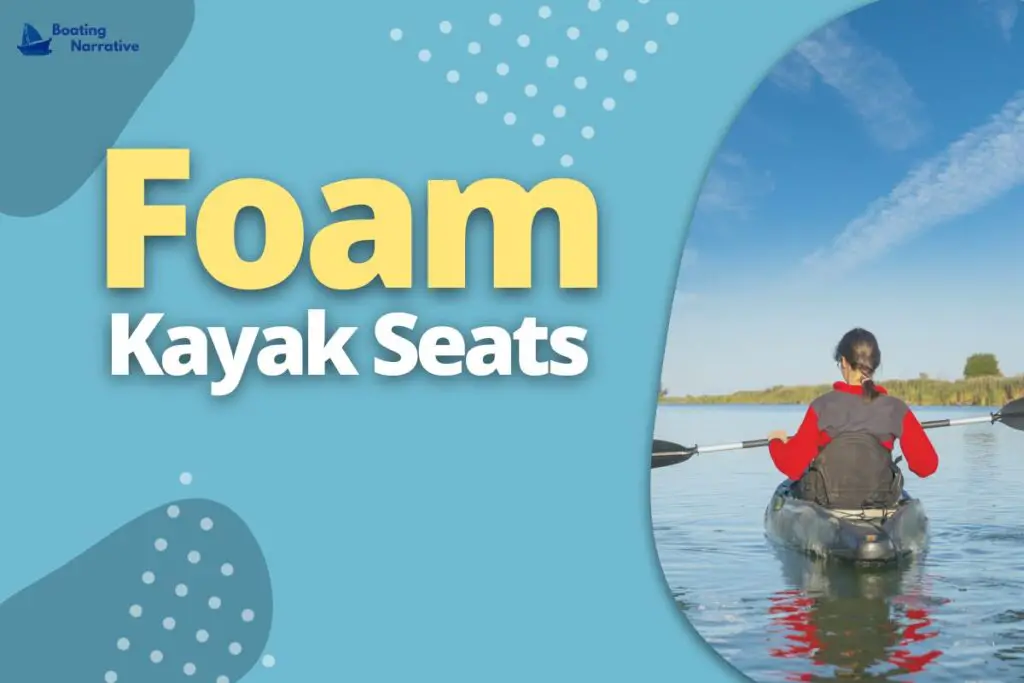Regarding kayaks, there are three main types of seats: high back, low back, and inflatable. Each type has its pros and cons, so it’s important to choose the right one for your needs.
In this blog post, I’ll break down the different types of kayak seats and help you decide which is best for you.
So, what are the different types of kayak seats? Read on to find out.
Key Takeaways
- Kayak seats are generally categorized into two types: fixed and adjustable.
- Fixed seats are usually made of molded plastic. They offer little to no adjustability, while adjustable kayak seats typically have more padding and can be moved forwards or backward, as well as up or down.
- The type of seat you choose will likely come down to personal preference. Still, it’s important to consider how comfortable you’ll be in the kayak for long periods.
- Plan on doing a lot of fishing or paddling in rough waters. An adjustable seat may be a better option since you’ll be able to move around more easily.
- Ultimately, the best kayak seat is the one that fits your needs the best – so take some time to try out different options before making a final decision.

Different Types Of Kayak Seats
Kayak seats are one of the most important accessories for kayakers. There are numerous varieties of kayak seats on the market, each with pros and drawbacks. The most popular kayak seats are nylon, gel, EVA foam, polyester, and neoprene.
Nylon kayak seats are very durable and comfortable. They provide good back support and can easily adjust to fit tall paddlers. They can get warm in the summer, though, as they are not as breathable as other kayak seats.
Gel kayak seats are made of a soft, rubbery material that conforms to the shape of your body. They are very comfortable and provide excellent back support. However, they can be expensive and may not last as long as nylon or foam kayak seats.
Eva foam kayak seats are made of rigid foam that is covered with a soft fabric. They offer excellent back support and are very comfy. However, they might cost more than kayak seats made of nylon or gel.
Polyester kayak seats are made of a strong synthetic fabric resistant to UV rays and mildew. They provide good back support and can easily adjust to fit tall paddlers. However, they may not be as breathable as other kayak seats and can get hot in summer weather.
Neoprene kayak seats are made of a soft, flexible material that conforms to the shape of your body. They provide good back support and can easily adjust to fit tall paddlers. They may, however, cost more than nylon or gel kayak seats.
Sit On Top Kayak Seats

The most common kind of kayak is a sit-on-top model.
They’re easy to get in and out of, have a low profile that allows them to glide through the water more easily than any other kind of kayak (which is why they’re great for beginners), and offer good comfort and support.
Sit-on-top kayaks are also called “open cockpits” because they allow you to sit higher than other kayaks.
This means you can see more around you, which helps prevent accidents from happening behind you when navigating unfamiliar waters or being approached by an animal like a dolphin or seal (which could be fun but also scary).
Inflatable Kayak Seats
Inflatable kayak seats are a quick and easy way to get your butt into the water. You can inflate them with a pump or by mouth, making them ideal for travel.
Remember that they’re not as durable as other kayak seats, so they might not be the best option if you’re planning on using your kayak frequently.
If you have a portable pump, it’ll take about 10 minutes to inflate an inflatable seat (and any additional air will just make it more comfortable).
To deflate it again, just cut off the valve and squeeze out all the air until there’s no more pressure left in the tube. Then store it wherever you want—it’s small enough that even an ungracious host won’t mind having one stored in their closet.
Foam Kayak Seats

Foam kayak seats are the least expensive option and offer less comfort and support than other types of kayak seats. They’re also more difficult to get in and out of than other kayak seats.
If you’re on a budget or just need a seat that will keep your butt dry but don’t want to spend too much money on it, then foam is probably your best bet.
However, if comfort is important to you (and who doesn’t want to be comfortable while they’re on the river?), then foam may not be the right choice.
Bucket Kayak Seats
Bucket seats are the most common kind of kayak seat. They’re inexpensive and easy to install and provide great comfort and support.
But they may not be suitable for everyone, especially people with back or knee problems who want to stand up in their kayak.
If you’re a beginner or want to try out a new activity, bucket seats may be the right choice.
They’re easy to get into, so if you want to sit down while paddling along on flat water or taking in sights from your perch on top of a mountain lake (like me), this style might work well for you too.
High Back Kayak Seats
High-back seats offer the best comfort and support if you plan on spending a lot of time on the water. These seats provide plenty of cushioning and can help prevent back injuries.
However, high-back kayak seats are more expensive than other kayak seats.
They’re also not ideal for shorter people with limited legroom since they tend to be bulkier than other types of kayak seats on the market today.
Suppose you think a high-back seat will work well for you. In that case, there’s no reason not to get one—it’s just important that you consider your height so that you don’t end up feeling cramped in your cockpit or spending too much money buying something that doesn’t fit right.
What To Look For In A Kayak Seat?

You must look at these five factors when choosing a kayak seat:
- Comfort. A comfortable seat will keep you happy and entertained during long trips on the water. Choose one with a cushion that’s thick enough to support your back but not so thick that it causes you pain or makes it difficult to sit straight. The best seats also have an adjustable backrest, so you can set it exactly how you want it.
- Support. In addition to being comfortable, a quality kayak seat will offer good lumbar support without being too stiff or heavy (which would cause discomfort). Most seats have adjustable straps near the top of their frames, so they can be adjusted according to personal preference. Some models even come with extra padding in specific areas for added comfort!
- Size/Weight/Price: These three factors go hand-in-hand with each other, though sometimes one may outweigh another depending on what type of vessel (iPad vs. Macbook Pro) you’re using as an example here). For example, if your kayaking plans include going on long journeys, having light equipment will make things easier for everyone involved, including yourself.
How To Choose The Right Kayak Seat For You?
When choosing the right kayak seat, you must consider your height and weight.
Most seats will fit up to a 6’8″ person comfortably. Still, if you are shorter than that or are looking for a seat that can be used in tandem kayaks (two people riding in one boat), you may need to look for special options.
You should also consider how much money you want to spend on a kayak seat and what kind of paddling will be involved when using the seat.
If there will be heavy use from multiple users who weigh more than 200 pounds and/or are over 6 feet tall, it might make sense to have their seats instead of sharing one between them all at once.
How To Care For Your Kayak Seat?

Once you’ve found the perfect kayak seat for your needs, it’s time to take care of it. First things first: clean your kayak seat with mild detergent and water. Make sure you rinse and dry thoroughly before storing.
You don’t want mold or mildew to grow on your beloved foam cushion! It’s also a good idea to ensure that your seat is completely dry before storing it since moisture can cause damage over time.
This can be especially important if you live in a humid climate where humidity levels often fluctuate throughout the year.
Store your kayak seat away from direct sunlight in an area with plenty of ventilation but not overly hot or cold (a closet works great).
These tips will ensure that you and your new favorite accessory have years of enjoyment together.
Conclusion
After reading this article, you should better understand the different types of kayak seats. The best type depends on what you need and how much you are willing to spend.
If you want comfort and support without paying too much, foam is the way to go. Suppose the price isn’t an issue for you, though. In that case, high backs offer great comfort and support and are lightweight enough for transportation purposes.
No matter your seat, make sure it is comfortable and provides enough support for your back. It is also important to ensure that the seat is properly secured to the kayak, so it does not move around during paddling.
If you’re looking for more information on kayak seats or other kayaking gear, check out our website or other articles on our blog. And don’t forget to follow us on social media for updates on new products and special offers.

